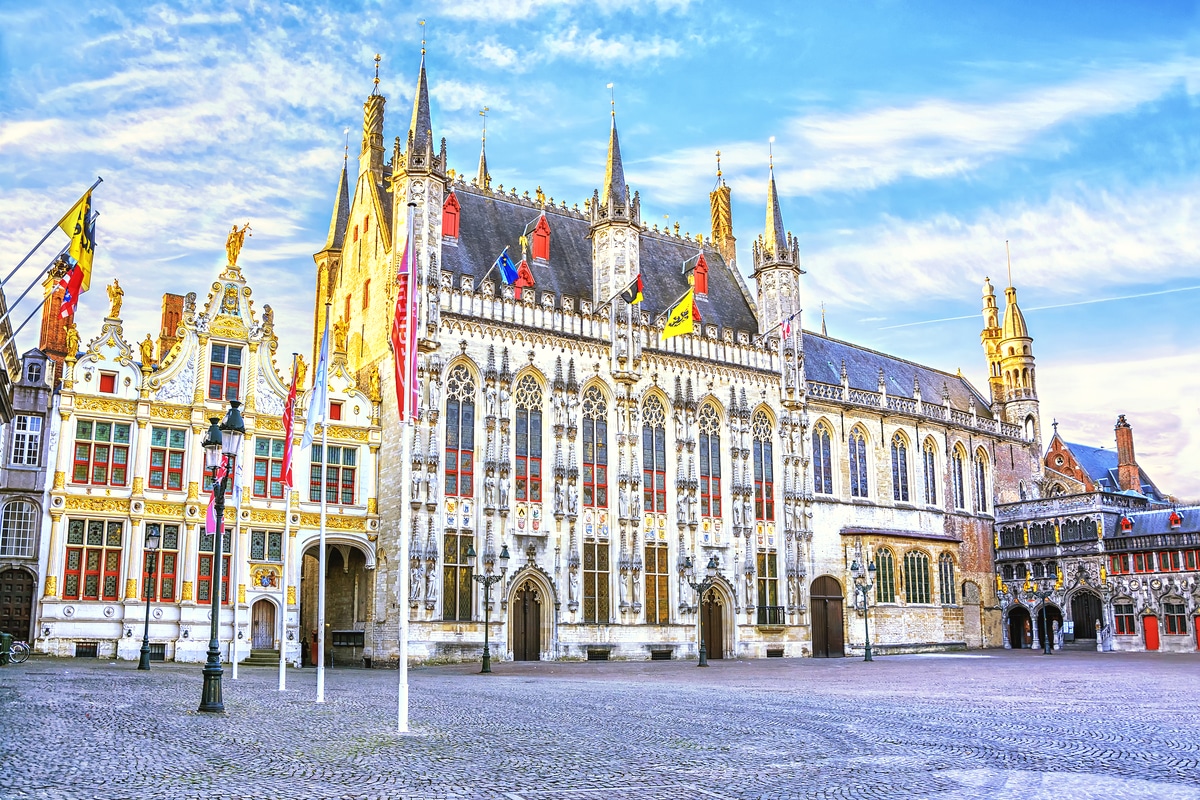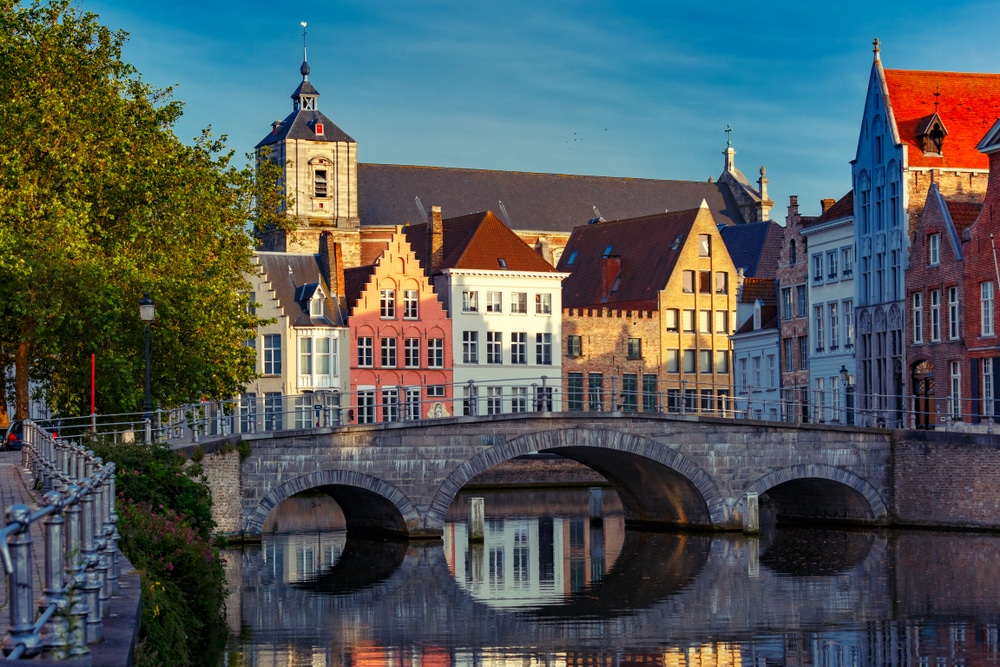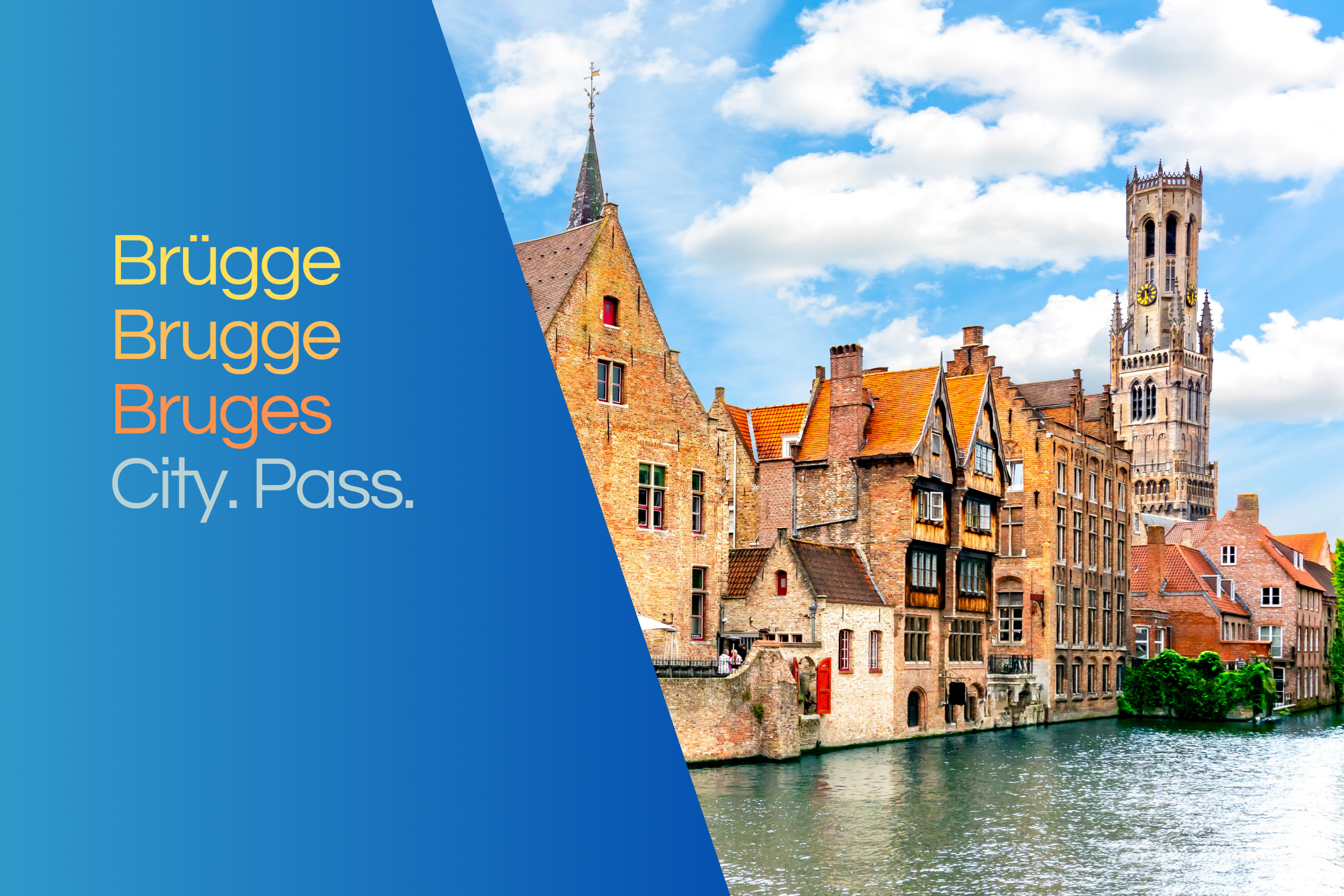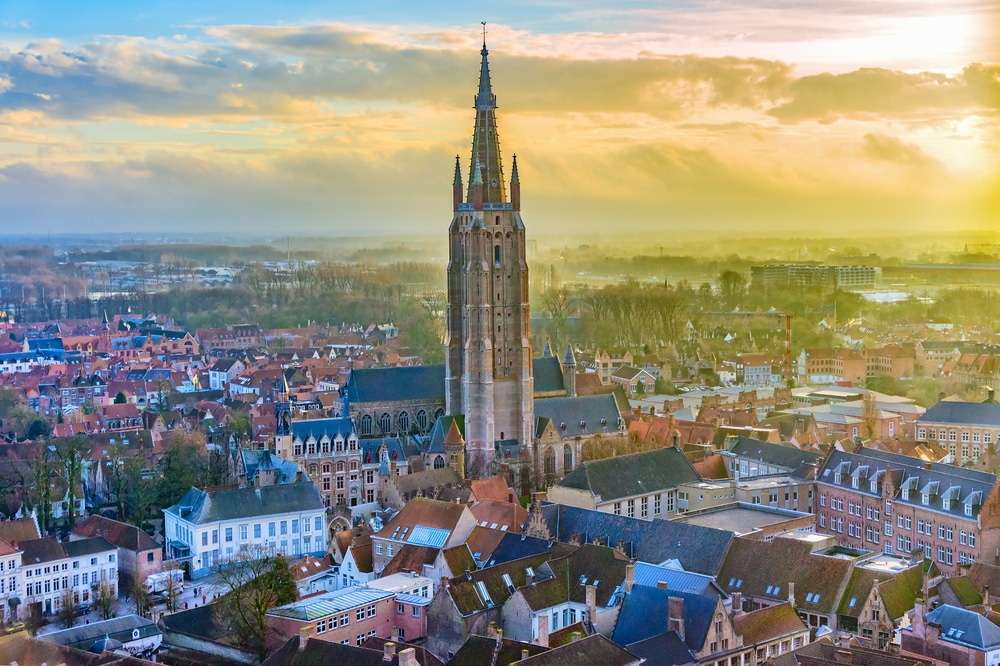The Stadhuis is part of the Bruggemuseum museum complex, but is also still the active administrative seat of the Bruges city government. Connoisseurs describe the old town hall not only as one of the oldest, but above all as one of the most beautiful town halls in Flanders, which is quite justifiably known beyond the borders of Flanders.
The building is one of the oldest examples of Gothic architecture in the whole of Flanders and the Netherlands, the magnificent façade decorated with sculptural work was extended several times in the 16th and 17th centuries and provides information about the great wealth of Bruges at that time. The façade was almost completely destroyed during the French Revolution, and from 1895 to 1905 the entire interior was renovated and rebuilt. Since then, the halls and rooms are also in Gothic style, and paintings depicting scenes from Bruges' history have been added to the walls.
The late gothic town hall of Bruges
The late Gothic Bruges Town Hall was built between 1376 and 1420, coinciding with the important period when Bruges was the most important economic centre in north-western Europe. The elaborately decorated façade impressively shows the wealth and importance of the city at the time of construction. After all, more than 40,000 people lived in Bruges towards the end of the 14th century. For their safety, too, a second city rampart was built at about the same time as the town hall.
Inside the Town Hall, an elegantly designed staircase leads to the magnificent rooms now used as part of the Bruggemuseum. In earlier centuries, this staircase also had ceremonial significance.
The design of the town hall was a model for many later Flemish town halls. Like many of the city's treasures, the façade figures designed in colour by Master von Eyck were lost during the French Revolution. Nevertheless, the splendour of the building is still clearly visible today.
The Stadhuis today
You are welcome to visit several rooms in the town hall. In particular, the former meeting room of the magistrate, the "Gothic Hall", on the first floor offers fascinating insights into the city's history. Here, the walls literally narrate various episodes that Bruges has experienced over the centuries in the form of exciting murals from the late 19th century. Church and city history are immortalised here, as are influential nobles and famous citizens of the city. The highly developed arts and crafts over the centuries are also honoured pictorially. In addition, you can admire the room's exceptionally designed oak ceiling. It dates back to 1402 and gives you a vivid impression of the outstanding Flanders craftsmanship of the late Middle Ages.
The "Historic Hall" in the old Stadhuis is also accessible and houses historical documents, exhibits and paintings. When you visit the exhibition and structural features, you will discover many exciting events in the town's history, as well as the interesting relationship between Bruges' citizens, princes and administrations over the centuries.





